Nationality Turkmen | Name Durdy Bayramov | |
 | ||
Education Known for Painting, works on paper Spouse(s) Gozel Bayramova (nee Dunyagozel Ilyasova) Books Through the Eyes of Durdy Bayramov: Turkmen Village Life, 1960s-80s | ||
Tribute art exhibition of durdy bayramov in canada
Durdy Bayramov (Russian: Дурды Байрамов; April 14, 1938 - February 14, 2014) was an academician and artist who was awarded the highest honorary title in his country: “People’s Artist of Turkmen SSR”. In his native Turkmen language, Durdy Bayramov’s name is simply “Durdy Bayram” (without the Slavic-style “ov” suffix added to Russify names during the Soviet era). The name "Bayram" means “celebration” in Turkic languages.
Contents
- Tribute art exhibition of durdy bayramov in canada
- Introduction to the Durdy Bayramov Art Foundation
- Early life and education
- 1960s
- 1970s
- 1980s
- 1990s
- 2000s
- 2010s
- Artistic style
- Death and legacy
- Solo exhibitions
- Awards and Distinctions
- References
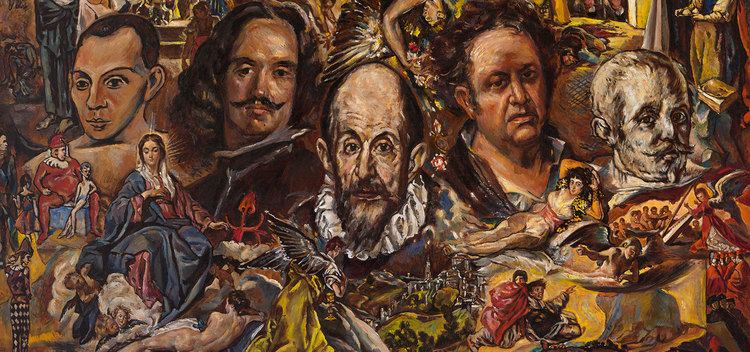
Introduction to the Durdy Bayramov Art Foundation
Early life and education
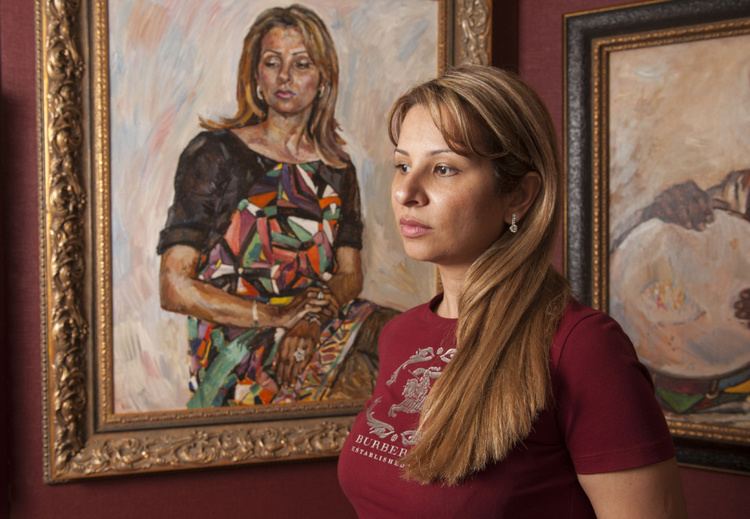
Bayramov was born in Baýramaly in the Turkmen Soviet Socialist Republic, then part of the Soviet Union, on April 14, 1938. He lost both parents at a young age and lived as a homeless child before being placed in an orphanage in Serdar (then known as Kyzyl-Arvat), where he was raised. Growing up, Bayramov endured starvation and the many hardships that accompanied World War II and the post-war devastation. Later, he benefited from the guidance of exceptional teachers who recognized his talent and supported the young artist in his efforts to become a professional painter. His first art teacher was Gennadiy Brusentsov, a Russian artist who taught at the Shota Rustaveli Turkmen Art College in Ashgabat. Bayramov and Brusentsov developed a lifelong friendship, with Brusentsov acting as Bayramov’s mentor over the years. Brusentsov’s portrait of a young Bayramov, titled Young Soccer Player, is in the collection of the State Tretyakov Gallery in Moscow. Bayramov painted three significant portraits of his teacher, with the most famous one being Portrait of My First Teacher, created in 1997-98.
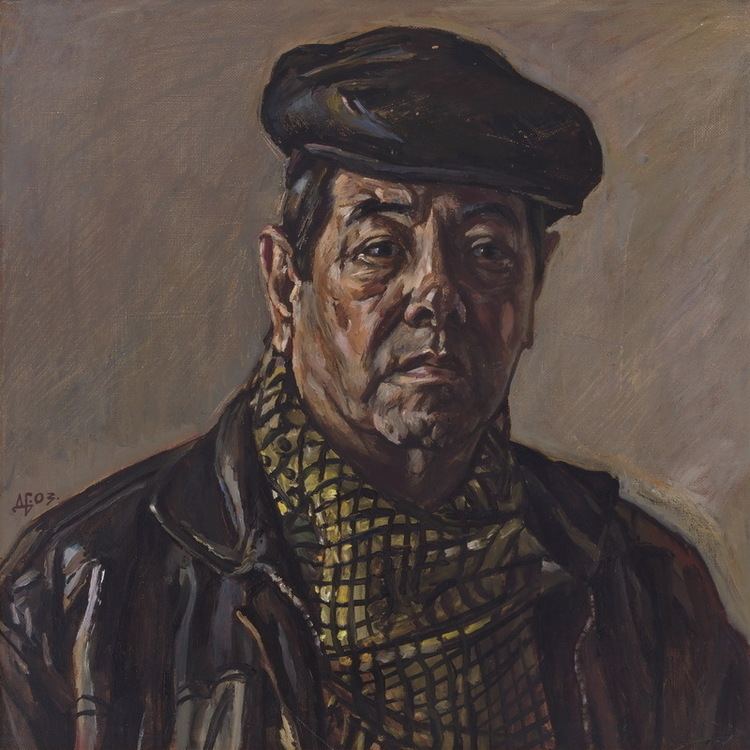
Another great influence on Durdy Bayramov’s life and artistic career was art instructor Dmitry Mochalsky, his professor at the prestigious Surikov Art Institute in Moscow, which Bayramov attended between 1959 and 1965. Mochalsky was a recipient of the highest honorary title in arts in the former Soviet Union—People’s Artist of the USSR—and was widely respected for his “ability to highlight the essential, while setting aside the extraneous details.” He passed that approach on to many of his students, including Durdy Bayramov.
1960s
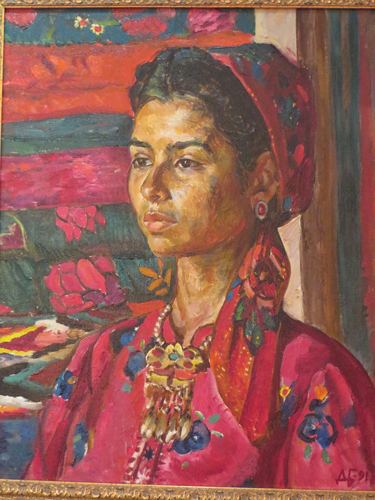
Upon completion of his formal education in 1965, Bayramov joined the USSR Union of Artists and began his career as a professional artist. The landscape genre was the first to captivate Durdy Bayramov. Many of his early landscape works (some dating to his student years) earned high praise from critics. His celebrated painting Peaceful Land (1969) is considered a classic example of Turkmen landscape painting.
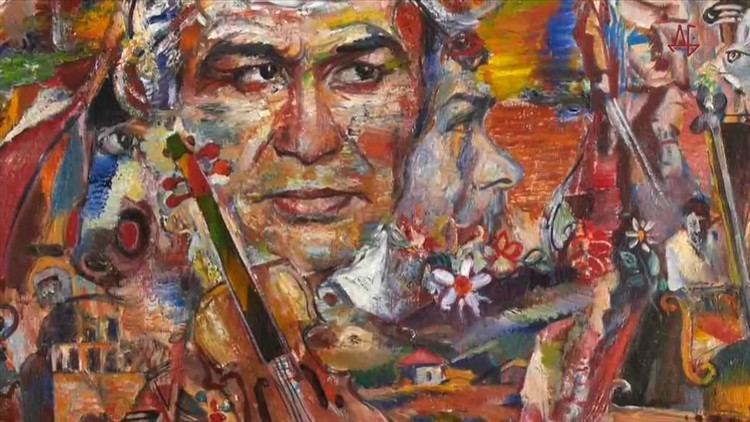
In 1966, Bayramov married his beloved muse, Dunyagozel “Gozel” Ilyasova, who would be one of his most frequently painted subjects and remain an inspiration for his work throughout his life. Bayramov devoted to her an entire series of works on paper titled Gozel, which includes 53 portraits of Gozel and four flower drawings dedicated to her.
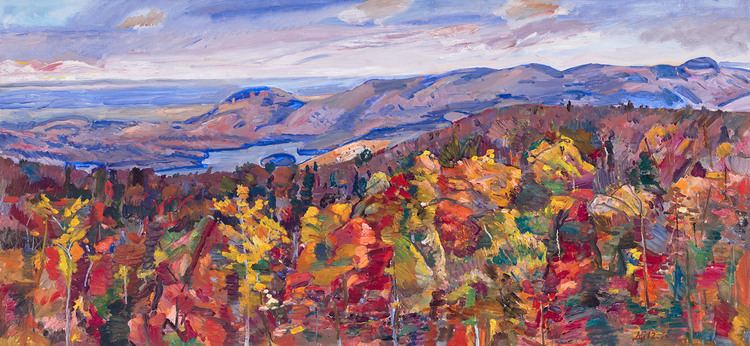
From 1965–1968, Bayramov served as an art instructor at the Shota Rustaveli Turkmen State College of Arts in Ashgabat.
1970s
Bayramov’s first major artistic honours arrived when he was named winner of the Turkmen SSR Lenin Komsomol prize in 1970 and of the USSR in 1972. In 1971, he completed what is considered the first Turkmen self-portrait, a work formerly held in the collections of the USSR Union of Artists in Moscow.
During this time, Bayramov pioneered the Second World War as a theme among Turkmen painters. His painting Frontline Assistance captured the deep patriotism of ordinary Turkmen women willing to sacrifice their most prized possessions to help soldiers. Another theme developed by Bayramov during this period was the process of making Turkmen carpets. This theme is seen in his famous work titled Turkmen Carpet Makers (1971), which depicts women at work in a carpet factory. This masterpiece of Soviet-era Turkmen art was first exhibited at the State Museum of Oriental Art in Moscow in 1971 and was later acquired by the State Tretyakov Gallery in 1979.
From 1971 until 1973, eager to assist up-and-coming artists, Bayramov returned to his position as art instructor at the Shota Rustaveli Turkmen State College of Arts in Ashgabat.
In the mid-1970s, Bayramov embarked on what was to become his most celebrated series, Cultural Figures. This series contains portraits of individuals recognized by Bayramov as having made important contributions to Turkmen cultural heritage during the late twentieth and early twenty-first centuries. The creation of Cultural Figures would span more than four decades and result in more than 150 individual portraits.
1980s
In 1980, Bayramov was named an Honoured Art Worker of the Turkmen SSR, and in 1984 he was awarded second prize and a Laureate Diploma for the contest commemorating the 60th anniversary of the Turkmen SSR and Communist Party of the TSSR. He remained highly productive throughout the 1980s despite personal hardships associated with perestroika (ca. 1985–1991), which caused a scarcity of basic household goods and food products for many people. Bayramov persevered and worked tirelessly, trying to lose himself in his art. He continued to expand his artistic repertoire through an increased focus on portraits and still lifes, especially flowers.
In 1985, Bayramov began work on one of his most celebrated thematic compositions—his monumental tribute to the great Spanish artists of the past titled Golden Mist. This work would not be completed until 2001.
Throughout the 1980s, Bayramov’s popularity and renown grew as a result of numerous solo exhibitions, including those held in Moscow, Russia (1980, 1984); Berlin, German Democratic Republic (1981); Ulyanovsk, Russia (1984); Ashgabat, Turkmenistan (two exhibitions in 1986 alone); and Budapest, Hungary (1986).
1990s
Following continued critical and popular success at home and abroad, in 1991 Bayramov was awarded the highest artistic title in his home country: People’s Artist of Turkmenistan.
In 1998, Bayramov was appointed an Academician of the National Academy of Arts of Kyrgyzstan, along with fellow artists Suhrob Kurbanov, Tahir Salahov, Turgunbai Sadykov, and Erbolat Tolepbai. In conjunction with the presentation of this award, Bayramov contributed works to the International Exhibition of the Academicians of Kyrgyzstan at the Academy of Arts in Bishkek.
2000s
Throughout the 2000s, Bayramov continued to travel and work extensively both within Turkmenistan and around the world. This included trips to Ukraine, where he held a solo exhibition in the Kiev National Museum of Russian Art in 2000, Russia (2003), Thailand (2004), Turkey (2002 and 2004), Maldives (2004), the United Arab Emirates (multiple trips between 2003 and 2007), Netherlands (2008), Italy (2009), Belgium (2010), and France (2010). In 2008, Bayramov celebrated his 70th birthday and his 50-year milestone as an artist with two retrospective exhibitions of his work in Ashgabat, Turkmenistan.
Based on his lifetime artistic achievements and contributions to the culture of Turkmenistan, in 2008 Bayramov was awarded the “For the Love of the Motherland” medal, presented to him by the President of Turkmenistan.
2010s
Bayramov continued his prolific artistic output into the 2010s, creating more than ninety oil paintings between 2010 and 2014.
In 2012, Bayramov spent six months in Canada where he created a well-known series of landscape paintings titled Canadian Autumn. In 2014, Bayramov’s paintings were displayed in Toronto, Ontario, Canada, marking the first exhibition of his work in North America. An inaugural exhibition of Bayramov’s photographs took place in Toronto in 2015. Titled Through the Eyes of Durdy Bayramov: Turkmen Village Life, 1960s-80s, the exhibition featured black-and-white photographs and was a Featured Exhibition in Scotiabank's CONTACT Photography Festival. The corresponding catalogue was published by the Durdy Bayramov Art Foundation in association with the Asian Cultural History Program of the Smithsonian Institution.
In 2015, a solo exhibition of Durdy Bayramov’s works was held at the World Bank Art Program in Washington, DC, with the support of the Embassy of Turkmenistan in the US. The opening of this exhibition coincided with celebrations of the 24th anniversary of Independence and the 20th anniversary of the Neutrality of Turkmenistan.
Artistic style
Durdy Bayramov created more than 5,000 artworks during his prolific career, including oil paintings and works on paper. He was also a passionate photographer, though he considered this activity a part of his artistic process and never attempted to exhibit his photographs. For this reason his considerable photographic work would not be exhibited until after his death.
Bayramov worked extensively across four genres: portraits, still lifes, landscapes, and thematic compositions, though he has long been best known for his portraits. As early as 1975, it was noted that “although he paints genre pictures and landscapes, one could say that portraiture claims his special attention.” Among his contemporaries, he was considered to be the “unsurpassed master of the portrait genre.” Bayramov penetrated deep into the character and inner life of his subjects to reflect their diverse personalities on canvas, while emphasizing their best qualities. Bayramov said he did this by “always looking for that special spark that exists within each person.” He sought to harmonize the contextual discoveries of Impressionism, the attention to detail of Classical Realism, and Turkmenistan’s rich artistic traditions. Bayramov found inspiration in people from all walks of life, regardless of their social, economic, or ethnic background. His subjects include a wide variety of individuals, from villagers to scientists, strangers to family members, children to seniors. Bayramov’s empathetic nature and close rapport with his subjects helps to explain his success in this genre.
Although Bayramov is best known for his portraiture, his work in the still life and landscape genres is also highly respected. Flowers held a special place in Bayramov’s still life works. He was particularly passionate about painting the rich colours and textures of the red poppies that carpet the foothills of Turkmenistan every spring. The depiction of fruit in Bayramov’s still lifes symbolizes the abundance of nature and his love for his native land’s fruit in particular. He often depicted apples, melons, pomegranates, etc. arranged on traditional Turkmen carpets, which feature göl woven motifs and vibrant colours, and on Turkmen ornamental felts called ''keche''.
Death and legacy
In February 2014, Durdy Bayramov was diagnosed with liver cancer. He died on February 14, 2014. He is survived by his spouse, Gozel Bayramova, four daughters, and seven grandchildren.
In 2015, the Durdy Bayramov Art Foundation was established in Toronto, with the aim of advancing Bayramov's legacy in art and education. To further this mission, the Foundation opened the Bayramov Museum. Located in Toronto, the museum contains the world's largest collection of Bayramov's works and hosts permanent and temporary exhibitions of Bayramov's art.
Durdy Bayramov is widely recognized as one of Central Asia's most important painters. His art can be found in many private collections, as well as in museums, galleries, and cultural institutions around the world, including:
